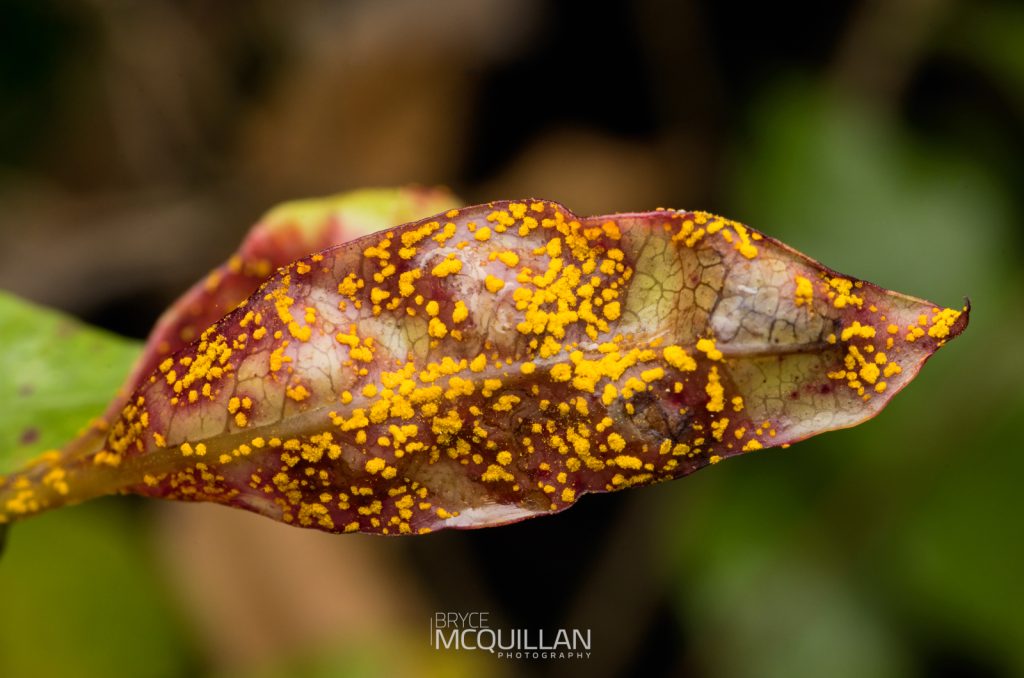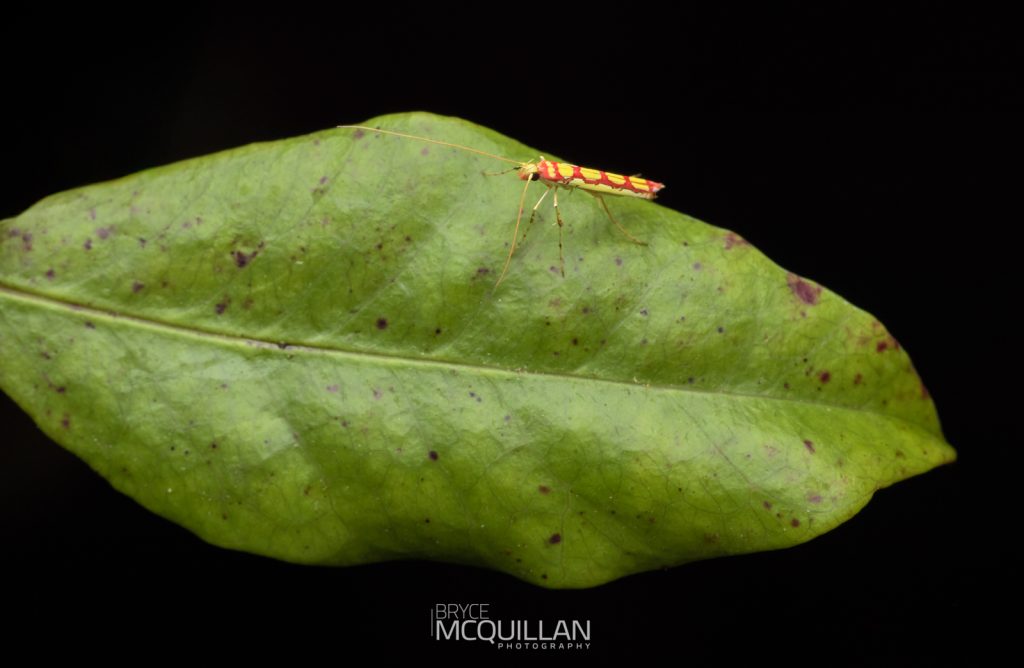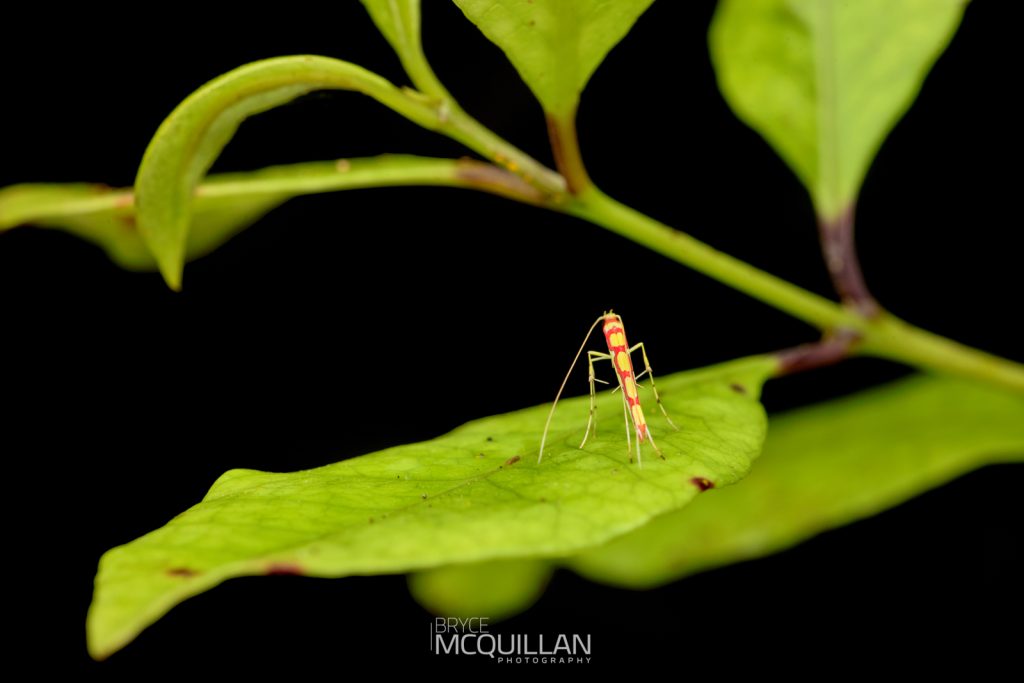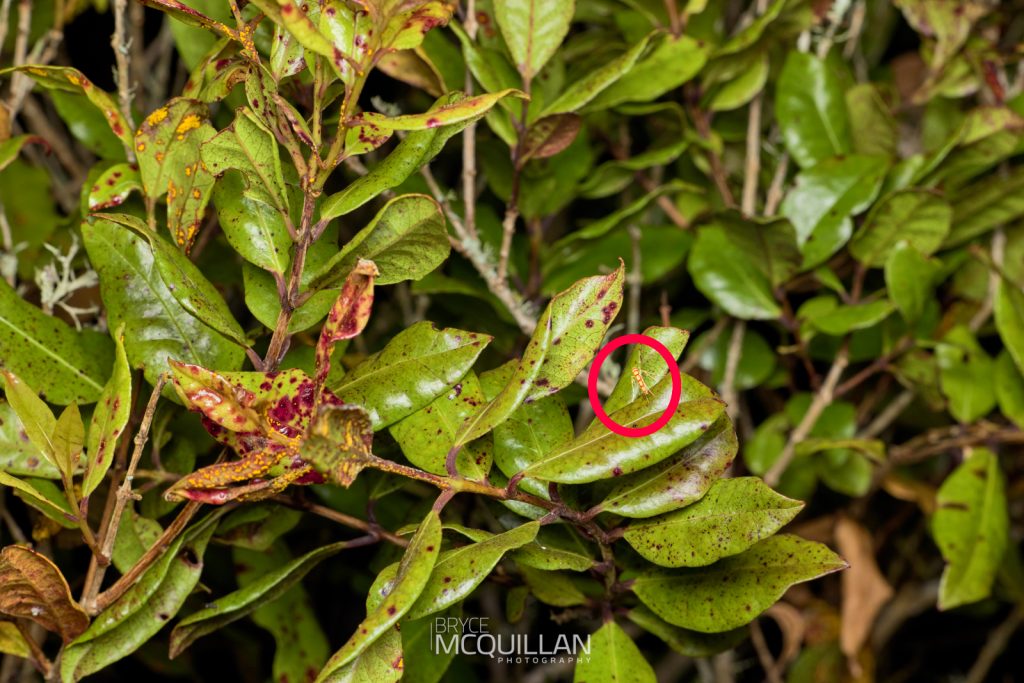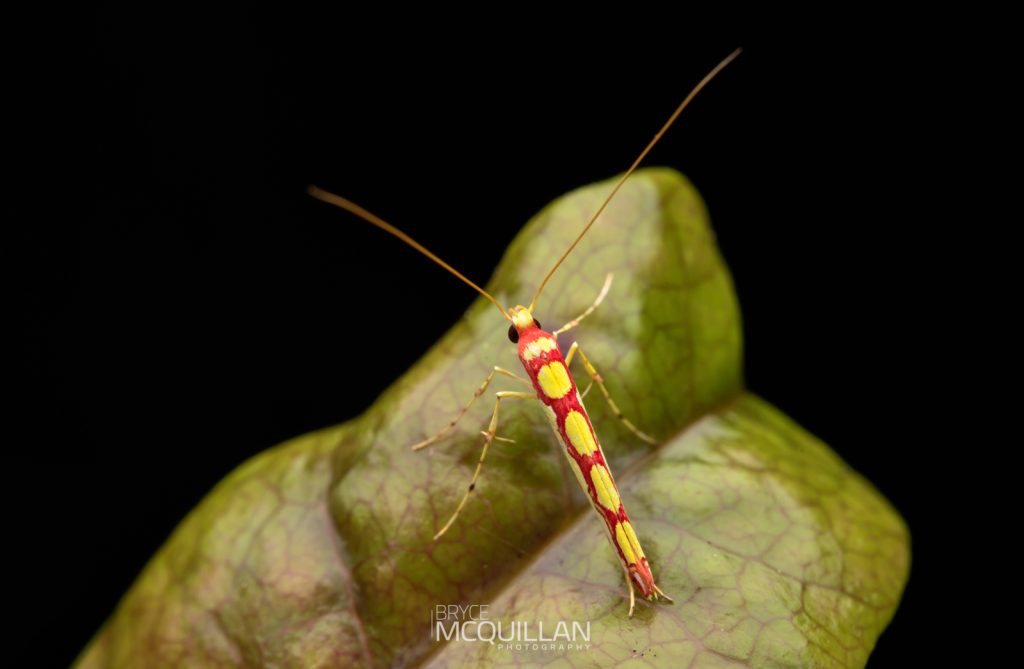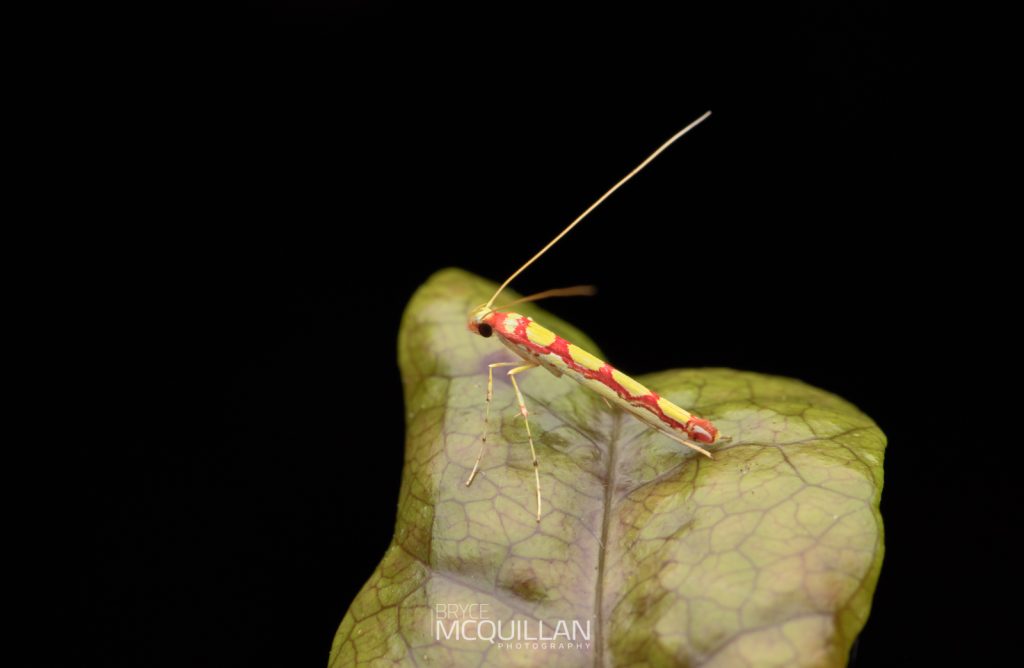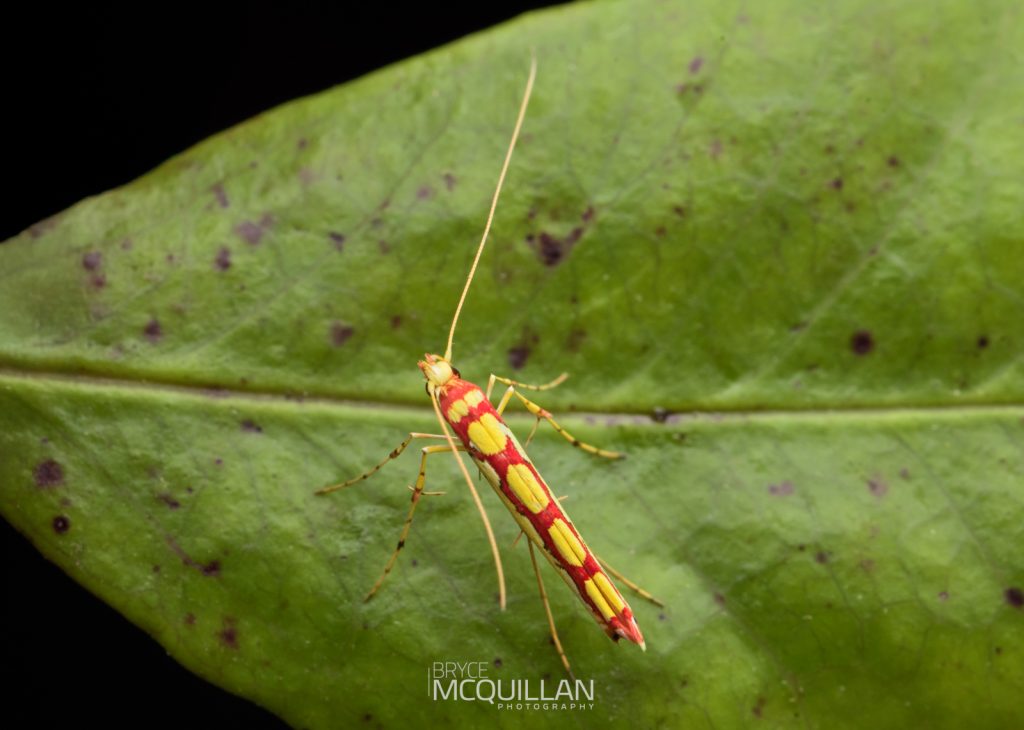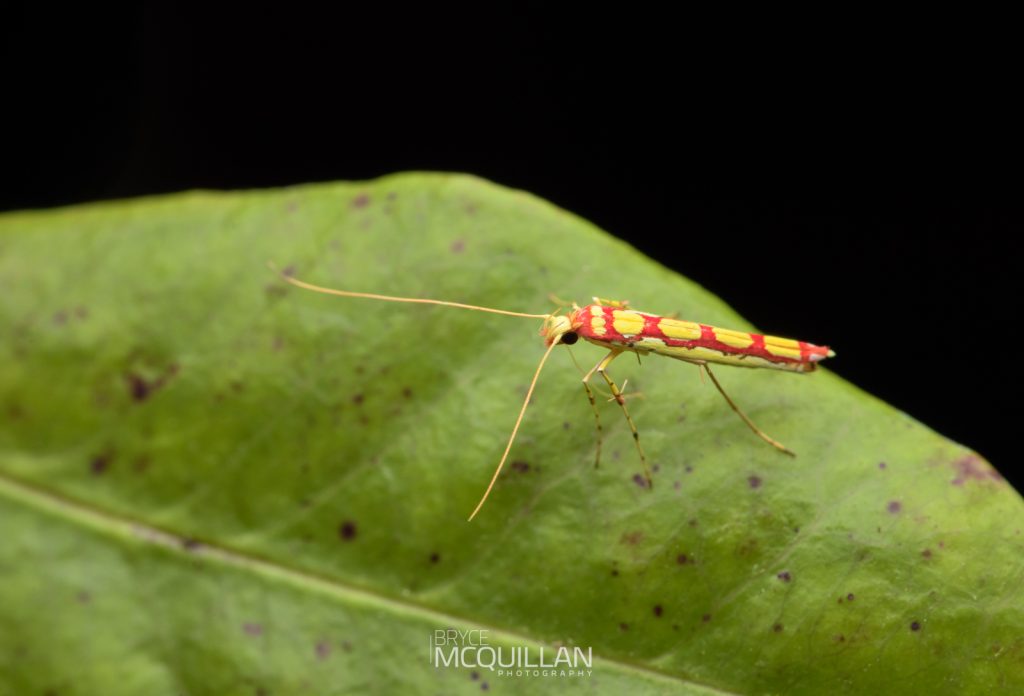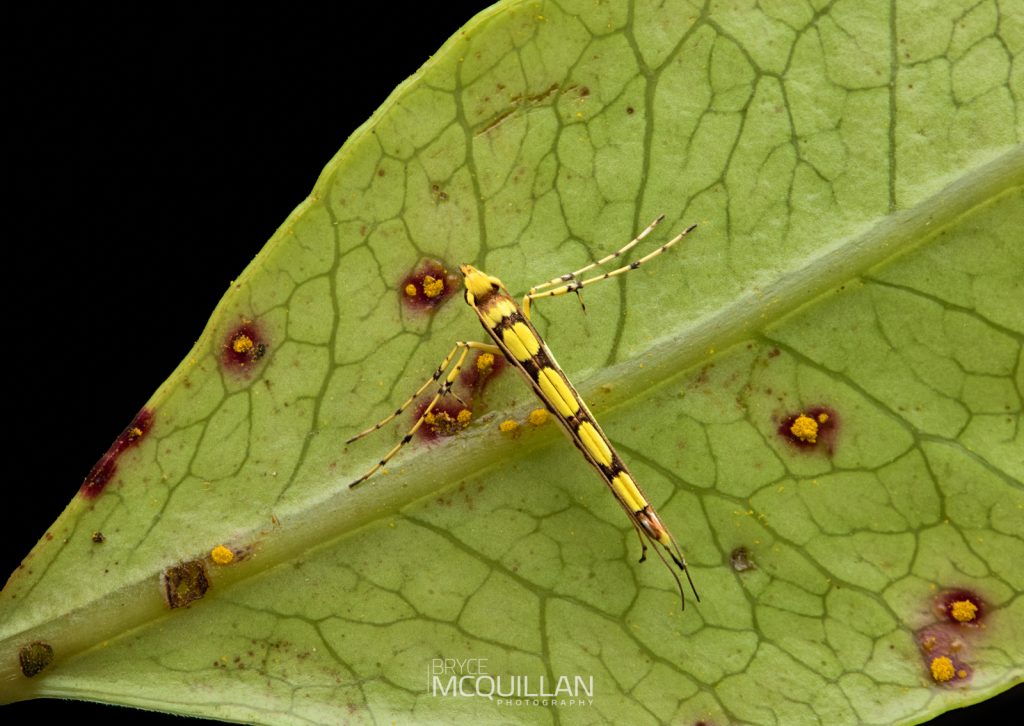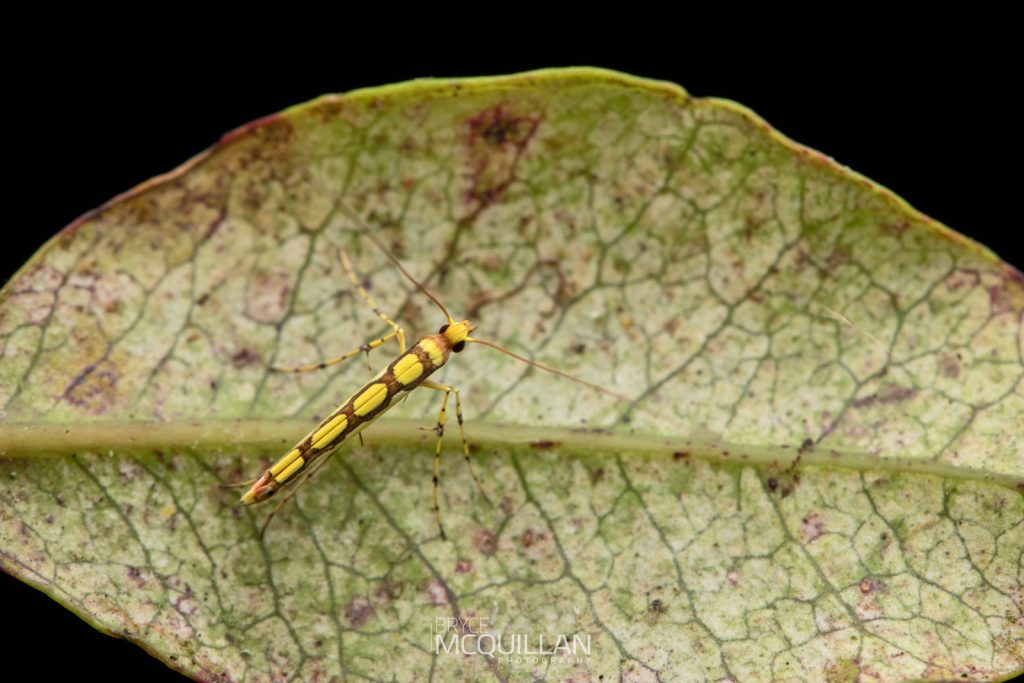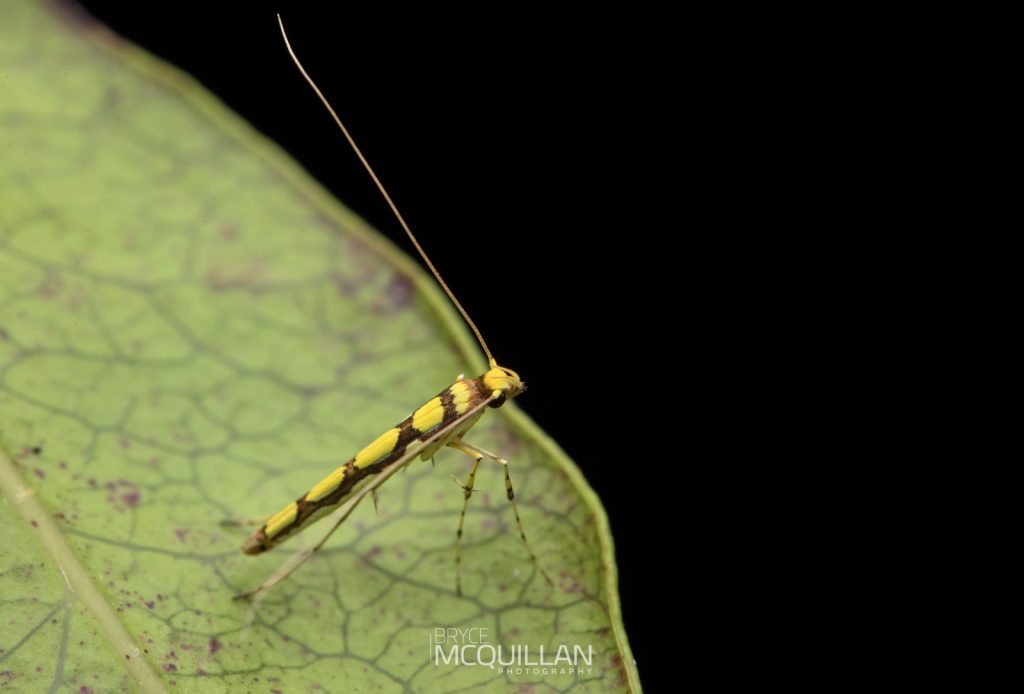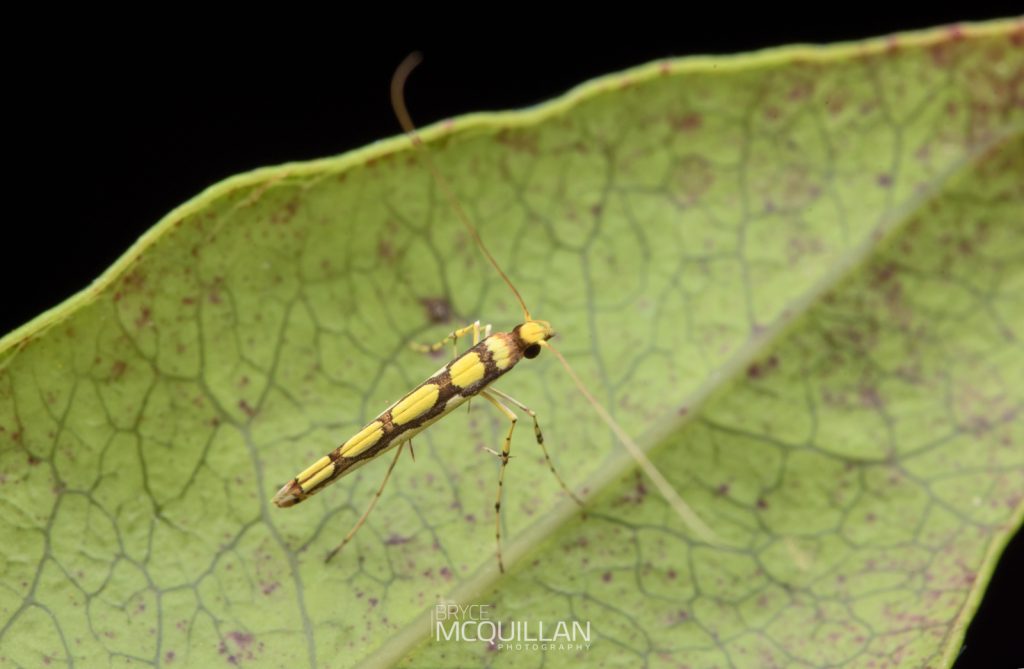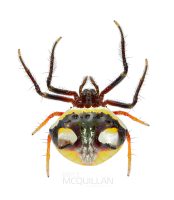On Saturday night, Angela and I ventured out with the hope of finding Macarostola miniella, commonly known as the swamp maire moth. This is one of New Zealand’s brightest-colored moths, with vivid yellow and striking red patterns being the most commonly observed colours. There is also a less common brown morph.
We chose a location within Hamilton where we had previously observed these moths, focusing on finding a site with a decent population of swamp maire (Syzygium maire), which is currently the only known host plant for M. miniella. While Hamilton has several areas with swamp maire trees, we specifically looked for a site with more mature trees, hoping this would increase our chances of finding more adult moths in flight.
This particular site we had visited earlier in the year, and we had observed that some of the trees had been infected with myrtle rust during the previous summer. We were keen to assess their current condition and determine whether myrtle rust had impacted the plants again this summer and what impacts it may have on the moth.
Upon arriving at the trees, we were disheartened to see that they were, unfortunately, infected with myrtle rust. The rust was heavily impacting the new growth, flower buds, and seed pods, which was truly saddening to witness.
Myrtle rust – present on the plant
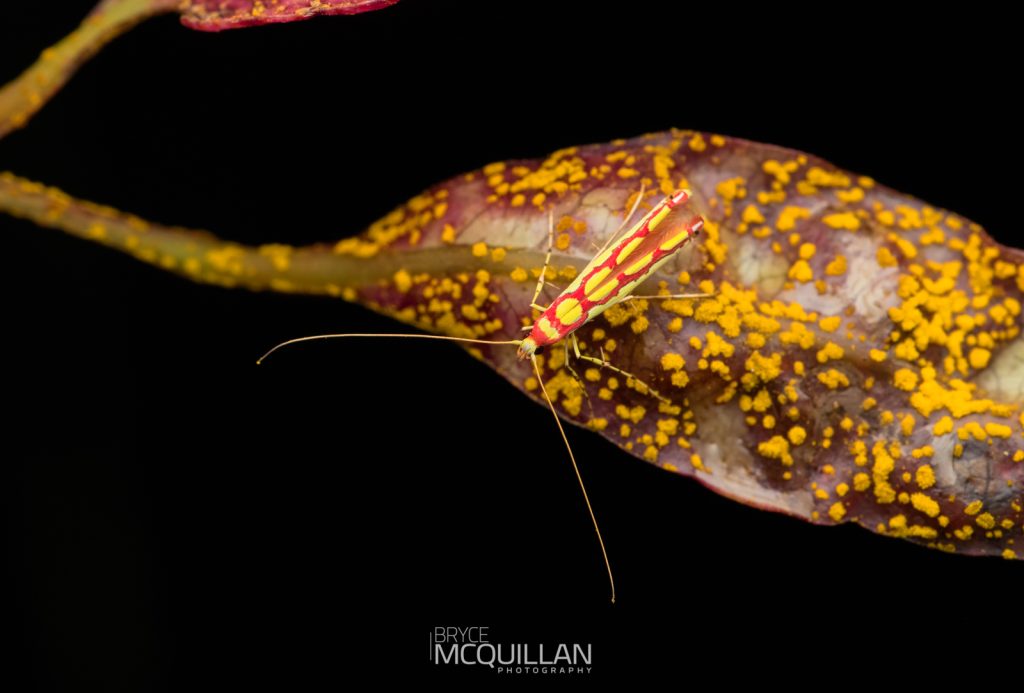
Swamp Maire Moth (Macarostola miniella) – resting on a swamp maire leaf infected with myrtle rust
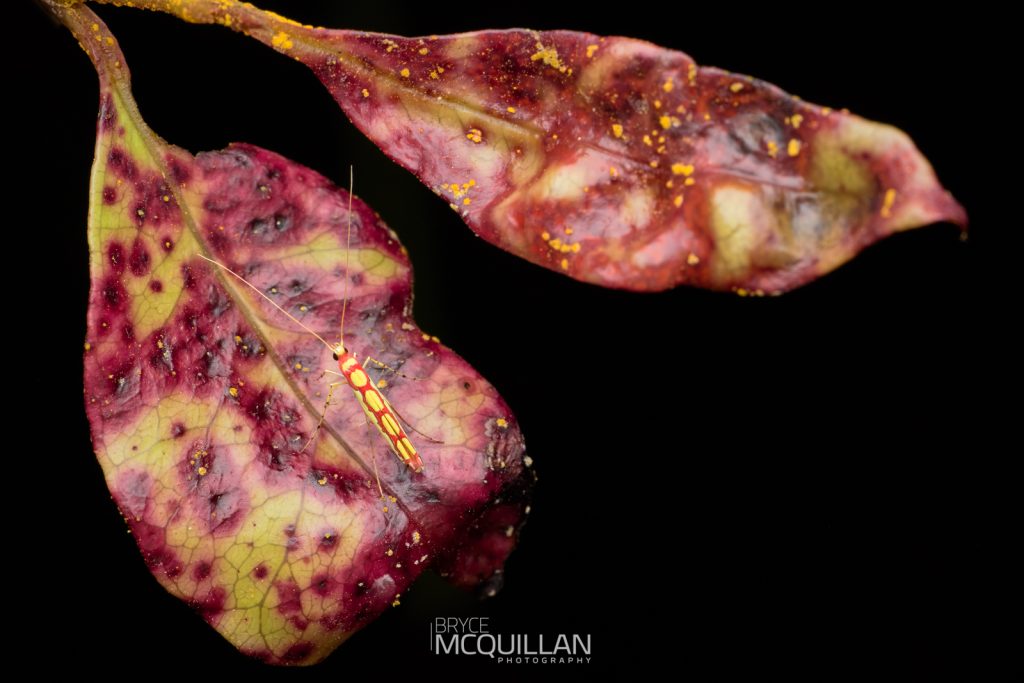
We were pleasantly surprised to see a good number of moths, with at least half a dozen in flight at any given time and dozens more perched on the plants. Interestingly, most of the moths appeared to prefer resting on the undersides of leaves—a behaviour I found quite unusual; this habit added an extra challenge to photographing them. When disturbed, these small moths often hopped from one leaf to another rather than flying away entirely. They didn’t appear to be strong flyers and, whenever possible, seemed to prefer “hopping” to another leaf or branch instead of taking flight.
Swamp maire moth (Macarostola miniella) – Hoping from leaf to leaf, when distrubed.


